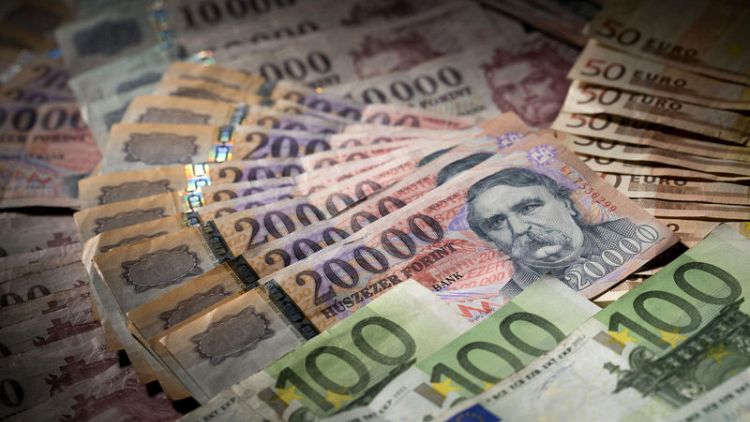By Alan Charlish and Miroslava Krufova
WARSAW/PRAGUE (Reuters) - Central Europe's main currencies are seen firming slightly against the euro in the coming year according to a Reuters poll, as central banks in the region point to stable rates ahead in contrast to the easing signalled in Frankfurt and Washington.
Central banks in Poland, Hungary and the Czech Republic look set to keep rates on hold this year despite a pickup in inflation. That contrasts with the euro zone and the United States where policymakers have signalled the need to ease policy to deal with weak inflation and risks to global trade.
A surge in wages has boosted economic growth in Central Europe, accelerating inflation, in contrast with a slowdown in the euro zone.
"Just leading up to now the market was discounting the ECB's normalising policy -- there would be tapering and there would even be a rate hike at some stage," said Tatha Ghose, Senior EM Economist at Commerzbank.
"The big change since then is the ECB, and we see the ECB cutting rates maybe even by 20 basis points and expanding its QE," Ghose said, referring to the central bank's 2.6 trillion euro asset purchase programme which it halted last December.
The Hungarian forint <EURHUF=> will firm 0.77% against the euro in the coming year to 320 versus the euro, the Polish zloty <EURPLN=> is seen gaining 0.5% against the common currency to 4.22 and the Czech crown <EURCZK=> also firming slightly to 25.30, according to the poll of 34 analysts.
On Wednesday Poland's central bank governor Adam Glapinski reiterated that there may be no need to change rates until 2022, despite an expected rise in inflation this and next year.
The Hungarian and Czech central banks both kept rates on hold in June, with the recent shift of major central banks towards easing being cited as one factor. The Hungarian central bank expects inflation to moderate from the end of 2019.
The Romanian leu <EURRON=> is seen weakening slightly in the coming year to 4.81 from 4.725 according to the poll, which was carried out from July 1 to 3.
The leu has been the region's worst performing currency this year, as the country has been hit by unpredictable fiscal policy and growing economic imbalances.
"When you have the twin deficit story in place, in spite of the global environment getting a bit better for risky assets we still expect the Romanian currency to underperform," said Ciprian Dascalu, Chief Economist for Romania at ING.
"It's basically the fundamental story which is much weaker than the other CEE currencies."
Romania's "twin deficit" refers to its budget and current account deficits.
The country's consolidated budget deficit widened to 1.43% of gross domestic product in the first five months from 1.1% at the end of April, while the current account deficit widened by 38.5% on the year to 2.31 billion euros in January-April.
The Serbian dinar <EURRSD=> is seen weakening about 0.3% against the euro in the coming year to 118.10.
Serbia's central bank has been purchasing euros on the local interbank market to stem gains of the dinar bolstered by investments and an inflow of euro remittances from Serbs working abroad, according to dealers.
(Reporting by Alan Charlish and Miroslava Krufova; Editing by Frances Kerry)



